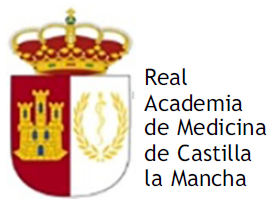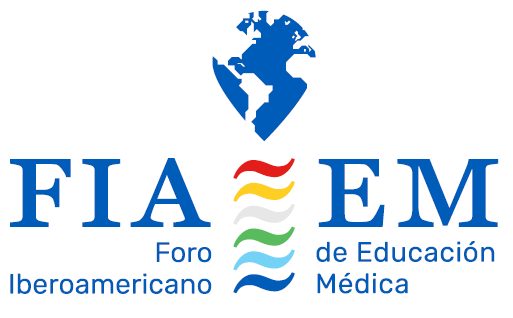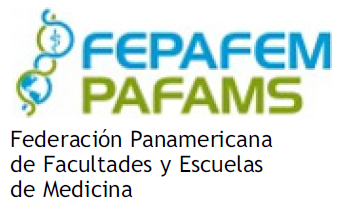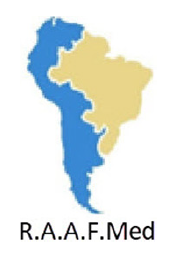Clinical reasoning is essential for effective clinical practice. Clinical reasoning helps medical students for clinical decision-making. However, development of clinical reasoning is challenging. The purpose of this study was to explore clinical reasoning perspectives among final year medical students.
MethodsExploratory descriptive qualitative research design was employed. The study was approved by the Institutional Review Board and Ethics Committee. Data were collected through focused group discussion from 2 medical colleges in English language. A semi-structured guide was used for data collection. Manual content analysis was applied for data analysis. The data were summarized in categories, subcategories that were presented with their pertinent direct quotes.
ResultsSix categories namely mentoring support and guidance, learning challenges, teaching and learning methods, assessment and feedback, systematic thinking, and being a life-long learning were developed. The categories represented appreciating and devaluating expressions of medical students for the development of clinical reasoning. Medical students expressed the need for mentoring, bridging theory-practice gap, clinical resources, thinking systematically and role of life-long learning. Whereas, curriculum overload, decontextualized curriculum, practice inconsistencies, and cultural issues hinder development of clinical reasoning. Challenges can be alleviated with effective clinical strategies, role modeling, being and becoming life-long learner and evidence-based medical practices.
ConclusionMedical students were aware about the significance of clinical reasoning. However, development of clinical reasoning was hinder by number of learning challenges. Alleviation of learning challenges is imperative for the development of clinical reasoning.
El razonamiento clínico es esencial para una práctica clínica efectiva. El razonamiento clínico ayuda a los estudiantes de medicina en la toma de decisiones clínicas. Sin embargo, el desarrollo del razonamiento clínico es un desafío. El propósito de este estudio fue explorar las perspectivas del razonamiento clínico entre los estudiantes de medicina de último año.
MétodosSe utilizó un diseño de investigación cualitativa descriptiva exploratoria. El estudio fue aprobado por la Junta de Revisión Institucional y el Comité de Ética. Los datos fueron recopilados a través de discusiones de grupo focal en dos colegios de medicina en idioma inglés. Se empleó una guía semiestructurada para la recopilación de datos. Se aplicó un análisis de contenido manual para el análisis de datos. Los datos se resumieron en categorías y subcategorías que se presentaron con sus citas directas pertinentes.
ResultadosSe desarrollaron seis categorías, a saber: apoyo y orientación de mentoría, desafíos de aprendizaje, métodos de enseñanza y aprendizaje, evaluación y retroalimentación, pensamiento sistemático y aprendizaje a lo largo de la vida. Las categorías representaron expresiones de aprecio y devaluación de los estudiantes de medicina para el desarrollo del razonamiento clínico. Los estudiantes de medicina expresaron la necesidad de mentoría, la superación de la brecha entre la teoría y la práctica, recursos clínicos, pensamiento sistemático y el papel del aprendizaje continuo. Mientras tanto, la sobrecarga de currículo, el currículo descontextualizado, las inconsistencias en la práctica y los problemas culturales obstaculizan el desarrollo del razonamiento clínico. Los desafíos pueden ser aliviados con estrategias clínicas efectivas, modelado de roles, ser y convertirse en aprendiz de por vida y prácticas médicas basadas en evidencia.
ConclusiónLos estudiantes de medicina eran conscientes de la importancia del razonamiento clínico. Sin embargo, el desarrollo del razonamiento clínico se vio obstaculizado por una serie de desafíos de aprendizaje. La mitigación de estos desafíos de aprendizaje es imperativa para el desarrollo del razonamiento clínico.
Clinical reasoning (CR) is essential for medical students to become a good doctor in future.1 Moreover, CR is a key element of clinical practice. CR is required for the effective practice of independent medical professionals and is a key skill to acquire as medical students. Graduates require expertise in CR skills.2 However, medical students find it challenging to learn CR skills.3 Medical graduates acquire this skill during their years of residency and this is stressful for most of the students.4 Majority of the undergraduate medical students (about 87%) believed that their CR skills can be improved after attending extra general practitioner facilitated teaching sessions, which were arranged for small groups of 6–8 students for 6 weeks.5
Development of CR skills involves the mobilization and application of knowledge and experience while facing a clinical problem.6 During the training of CR skills, the students realize the importance of history taking and physical examination and try to reinforce and integrate these basic skills.7 Medical students should develop these effective CR skills before practicing as independent doctors.6
It is further asserted that, students with poor CR skills feels anxiety in making clinical decisions and make diagnostic errors.8 These diagnostic errors cause great harm to patients.9 CR failures are a significant cause of patient morbidity and mortality. It results in about 40 000 deaths each year and is also a cause of 28.6% of malpracticing claims in America.10 CR forms the connection between medical knowledge and clinical practice.11 CR skill is the key to medical competency and is an essential domain required to become a good physician.3,12 Generally, CR errors are not due to lack of knowledge or incompetency but are due to the weaknesses in student's cognitive processes during uncertain, complex situations, and under time pressure. Effective use of metacognitive strategies reduces the CR errors.13
CR is a repetitive process. It occurs rapidly and with little metacognitive guidance, but the chances of clinical reasoning error increases. Clinical reasoning errors are not due to inefficiency or poor knowledge and concepts, but due to unpredictable situations, difficult cases or time constraints.14 The purpose of this study was to explore clinical reasoning perspectives among final-year medical students.
MethodsDescriptive qualitative study was conducted in 2 medical colleges of Islamabad during September 2022–November 2022 in a public-sector medical college and the other was private medical college.
Purposive sampling was employed. Invitation to participate in the study was sent to student's WhatsApp group. A flyer and invitation were also pasted at student's notice board. Medical students who contacted the primary researcher, were selected for study. Two focus group discussions (FGD) comprised 10 students from public and 10 from private medical colleges.
Two trial interviews were conducted before focused group discussions to test the semi-structured questions guide. Two researchers (G.M.J.B and SK) conducted focused group discussion. The discussion was started with asking a broad question “how do you learn at clinical”, “what facilitates the clinical reasoning in clinical practice”, and “how different methods improve clinical reasoning and learning.” Following these open-ended questions, different probing questions were used to obtain more information. Students were asked to provide more information, provide examples, can you elaborate. The discussions were audio recorded. English language was used in focused group discussions.
Manual content analysis15 by Creswell was used. Following the FGD, a systematic approach to data analysis was adopted, beginning with the development of transcriptions. G.M.J.B and SK prepared the data for analysis. The audio recordings were transcribed. GV validated the transcriptions with text and audio recording. These transcriptions underwent a thorough process of reading and rereading aimed at fostering a deep understanding of the content. Throughout the process, the spoken words pertinent to the research questions were highlighted. Subsequently, these highlighted segments were subjected to further scrutiny, as meaning and codes were assigned to clarify the underlying categories. The similar codes were combined to develop categories and subcategories. Research supervisor AJP validated the analysis and ensured trustworthiness.16 All authors approved the analysis.
ResultsData analysis resulted in 6 categories namely mentoring support and guidance, learning challenges, teaching and learning methods, assessment and feedback, systematic thinking and practicing, and being a life-long learner. The categories, their corresponding subcategories, and direct quotes are described below.
Mentoring support and guidanceThis category has 4 sub-categories namely stimulation of deep thinking, mentor as a resource-person, theory–practice linkage, and accessibility of mentor.
Stimulation of deep thinkingMedical students from both colleges expressed that mentors' guidance and support can stimulate deep thinking. The stimulation of deep thinking is activated by the high-order questioning of the mentor. College-A medical student shared “Mentor sometimes asks you questions that stimulate your thinking and guides that this is the point you should focus on.” [FGD-2] which supported by the college-B medical students that “there should be questions even from the mentor to facilitate and deepen learning.” [FGD-1].
Mentor as a resource-personMedical students from both colleges shared numerous quotes about the mentor serving as a most valuable resource for them. The mentor's ability to transfer knowledge, answer the students' questions, providing them opportunities to learning by observation make a mentor resourceful for learning. Medical students emphasized that they “should have some mentor in the hospital, he can teach us and add to the points that are not covered in the books.” [FGD-2]. Medical student highlighted that mentoring is necessary even beyond undergraduate education “mentorship is necessary at any level even after postgraduation. A mentor helps us understand a lot of things in the hospital that are pretty different from the classes that we take in college.” [FGD-1].
Theory–practice linkageThis is achieved when students apply classroom or skills lab in the clinical practice. Medical students denoted that “If we have a supervisor with us, we can actually bridge the gap and enable us to interact with the patients and their family too.” [FGD-2]. This is particularly important when students engage in clinical practice. “The mentor can help us in the best way by bridging the gap between us and the patient” [FGD-1]. Medical students gain confidence when they connect theory with practice due to mentorship.
Accessibility of mentorThe above-mentioned needs and concerns of medical students are only possible when mentor is available for onsite mentorship. An available mentor can help students to regulate their cognition to influence diagnostic thinking. “it's very difficult to get your focus right without a mentor, without someone telling you what to do. We should have a mentor who will be shadowing.” [FGD-1] Medical students highlighted the importance of mentor's behavior for learning that “mentors should be polite first and it's better for us that we should feel ourselves comfortable during learning.” [FGD-2].
Learning challengesMedical students expressed several learning challenges namely scarcity of learning resource, curriculum overload, language barrier, teacher–student–patient ratio, inconsistencies, and culturally sensitive issues.
Scarcity of learning resourceDuring focus group discussions, multiple times, medical student pointed-out scarcity of learning as a barrier to their learning. Students do not engage in cognitive exercises and practical learning when they experience a lack of resources. “there are no simulation labs, and even if there are labs they do not have proper access to them because of strict time allocation” [FGD-2] They also expressed inappropriate scheduling to use those resources for their learning. “These labs are for limited time and for few subjects like we cannot go and practice after classes.” [FGD-1].
Curriculum overloadCurriculum overload was expressed as a learning barrier to medical students. This happens when a large textual information is expected to learn in a short duration. As a result, students feel burdened. “We only have two months maximum to go through all of the medicine course. We can't cover the whole Bailey & Love or the whole Davidson in just two months. It feels like an explosion of syllabus.” [FGD-2] This is likely to be possible with a modular approach. Medical students feel cognitive overload due to curriculum overload.
Language barrierThe diversity of languages used by patients hinders medical students to interact with them and this becomes as learning barrier for the students. Similar language is important for interaction, history taking, and building a professional and therapeutic relationship. Medical students of both colleges shared “majority patient that come to clinics don't even speak language that we are accustomed to. Like, they wouldn't be very fluent in Urdu and they wouldn't be able to tell their concerns and their problems in that language.” [FGD-2, FGD-1].
Teacher–student–patient ratioMedical students point out the teacher–students ratio and students-patients ratio as a barrier to their learning. This challenge is also reflected when there are few patients and more students. “Our teachers and doctors are very overburdened, only one or two students should be assigned to one mentor. Patient would get overwhelmed if a whole group of doctors bombard him.” [FGD-2].
Practice inconsistenciesThe inconsistent guidance and practice of mentors and clinicians served as a barrier to the medical students. This may confuse the student that which practice to follow. Medical students shared; “one consultant have another way of approaching the patient and other have other ways, so students get confused as to follow which consultant or the text.” [FGD-2, FGD-1].
Culturally sensitive issuesLastly, culturally sensitive issues challenge medical students' learning. “You know, there are certain issues, like a sexual history of the patient. Those are certain sensitive issues, even family histories, maybe they do not want to share that. Sometimes they don't tell you the information.” [FGD-2, FGD-1] The hesitance and incompetence of students serve a challenge to learn about culturally sensitive issues.
Teaching and learning methodsIn response to learning challenges, medical students expressed numerous teaching and learning methods that may help them in diagnostic thinking and meta-cognitive awareness.
Experience of teachingFirst of all, the expression of medical education to medical students is “the way of teaching is difficult in medical colleges.” [FGD-2].
SimulationMedical students expressed the need for simulation for exposure to real-life learning situations. “There should be clinical skill labs or models on which you can practice first because in the hospitals there are acutely ill patients and some also get scared during examination.” [FGD-2] This also shows the sensitivity of students to attain sufficient competence before engaging with real patients. This expression is verified in another focused group discussion “It is not possible for us to straight away jump into the reality and treat the patient. We firstly prepare ourselves in labs and then move to the reality.” [FGD-1].
Learning through active observation of demonstrationsMedical students also valued active observation. The active observation involves using of senses to learn. “If I see a patient and relate with them a knowledge, then I will never forget it.” [FGD-1] The active observation enable practitioner to interpret non-verbal cues pertinent to specific conditions. “You can assess many things just from the body language, just by the way the patients behave.” [FGD-2, FGD-1] The use of touch described in practical involvement as shared by students “the best way to master the clinical skills is to practice them. The more we do, the more we learn.” [FGD-2]. Moreover, medical students shared the importance of active hearing “As a doctor, you have to be a good listener. So, if a doctor is not a good listener, the patient is not going to tell you stuff.” [FGD-2].
Role-modelingClose observation becomes a significant mode of learning when a role model offers to involve students in learning. “Mentor tells you by his action, teaches you how to behave in a hospital, how to behave in front of the patient, and your body language, all of these things matter because the patient can only trust you if he feels comfortable with you.” [FGD-2, FGD-1].
Diverse case studiesMedical student expressed diversity of the patient population is a challenge and this might be a possible solution to learn about diverse cases as they expressed “It's very important to see a diversity of specific cases. For example, of liver cancer, how you should not have a certain presentation in your mind that this is the presentation of a liver cancer.” [FGD-2].
Study of contextual diseasesMedical student expressed the need for contextual curriculum in the following quote “Our medical syllabus are mostly written by some people overseas. That is not personalized to the Pakistani population. We don't know like which diseases are prevalent in this community.” [FGD-2]. Therefore, “We need proper curriculum and proper guidance.” [FGD-1].
Clinical practice guideMedical students expressed the need for a clinical practice guide that may help them to plan their clinical learning. “We could come up with a log book type system like you already have, but it could be more elaborate. We can have a checklist of all the clinical skills.” [FGD-2].
Ethical medical educationThe following quote determines the sensitivity of medical students to ethical practice in medical education. “It is also ethically wrong that you straight jump to a person without proper learning. It is hazardous for the patient because the patient is in a lot of pain. It is bad for the hospital, for the student and for the patient.” [FGD-2].
Evidence-based medical educationThe following sharing of the students depicts their thinking to use medical research. “We should incorporate an environment of reading research articles in medical curriculum like journal clubs and reading case reports of various cases.” [FGD-1] Students expressed the need of their involvement in research. “Medical students should be involved in several clinical trials that are running in hospitals. Research is also an important pillar of medicine that is being missed out by the medical students.” [FGD-2].
Assessment and feedbackMedical student expressed the need to assessment and feedback for clinical reasoning and learning.
Assessment“I think I can be better at my clinical skills if we are periodically tested for it. We should be assessed regularly.” [FGD-2]. Students proposed for graded assessment which may stimulate actively involved in learning. “Another way to improve the clinical skills of students is to have an individual based performance exam.” [FGD-2, FGD-1].
FeedbackFollowing quote express the value of feedback for learning and improvement. “Feedbacks should be taken from the students, the mentor and the teachers. We can never learn something if we do not know where we are wrong.” [FGD-2].
Systematic thinking and practicingThis category explains the structure of memory of the medical students to use the knowledge in clinical practice.
Approaching to patientThis sub-category denotes to the students' thinking to approach the patient in a systematic and humanistic manner. “You have to build a good rapport with patients and make them comfortable. This is a non-judgmental setting. I'm here to listen to you because in medicine, the goal of medicine is diagnosis.” [FGD-2].
Application of diagnostic thinkingThis sub-category denotes to use of diagnostic thinking, i.e., diagnosis and management of the patient. “I have had differentials down with me, I would order investigations to confirm the diagnosis that I have in mind. And according to the diagnosis, I would give the treatment to the patient.” [FGD-2].
Being a life-long learnerBeing and becoming a life-long learner is a valuable learning virtue. A life-longer builds a positive humbling attitude towards learning which helps the learner to strive for excellence.
InsightfulnessInsightfulness refers to the students' ability to clearly understand the phenomenon or concepts. This category connects to the meta-cognitive awareness of the students that they “Never think that you know everything. [FGD-1] Medicine is an ongoing process and clinical skills change from time to time, so we should always advance our education.” [FGD-2] and to practically doing so “You should spend more time with patients because you are going to treat them.” [FGD-2].
Reflective practice behaviorEngaging in reflection enables learner to see their true self. “You learn from books and improve your skills when you will practically apply on the patients. It will help you to gain experience and analyze your strengths and weaknesses; you can focus on your weak areas.” [FGD-2].
DiscussionThe qualitative exploration in current study revealed that medical students experience the way of teaching as difficult. Whereas Brazilian medical students reported that they enjoyed medical education.17 Medical students in a qualitative study18 shared that they do not enjoy teaching because of teaching load. This is validated by curriculum overload expression by students. Medical students shared that their teachers as well. As a result, their learning was compromised. These pose a serious concern for the development of a clinician role regarding history taking and clinical reasoning.
Medical students expressed that they are expected to learn medical and surgical book within a short period of time. Perhaps this contributes to the development of cognitive load and hinder clinical reasoning. Medical students in present study also highlighted that during classroom learning was not aligned with clinical experience. Therefore, they proposed that curriculum should incorporate the diseases of local context. This might help them for application of knowledge, and improvement in diagnostic thinking and meta-cognition.
Medical students pointed out number of challenges to clinical reasoning and learning. Medical students of both settings pointed out the issue of curriculum overload. As a result of curriculum overload, students spend more time learning factual than conditional and procedural knowledge. Curriculum overload is also referred to as a curriculum disease, i.e., curriculum hypertrophy19 which calls for the treatment including curriculum chucking, curriculum alignment, and revision of the curriculum for contextual fit. Medical students expressed language barrier and culturally sensitive issues as learning challenges for application of conditional knowledge. Medical students expressed that due to language barrier, they were not able to communicate with patient effectively. As a result, they could not identify the concerns and problems of patient. This can be a big challenge for the development of diagnostic thinking. Culturally sensitive issues add to the communication challenges. For instance, seeking sexual history can be convoluted from medical student and patient perspective.20 Patient may also not open up or provide insufficient information to reach accurate diagnosis. This may contribute to diagnostic inaccuracy. Students in present study shared that a systematic thinking and practicing approach can be helpful to interact with patient and obtain information. Moreover, competence-based medical education is advocated to develop the physician role.21
Medical students expressed about lack of learning sources necessary to develop their clinical skills. Medical students highlighted the improper student–teacher ratio and student–patient ratio as well. They specifically shared during focused group discussions that their teachers were overburdened. Most of the challenges were expressed by the medical students of public sector medical college. Medical students in present study further elucidated regarding essence of feedback as a most important way to improve and learn that it is almost impossible to learn without feedback.
Medical students suggested number of teaching–learning methods for application of knowledge including simulation, engaging in reflective practice, learning through active observation of demonstrations, utilization of diverse case studies, study of contextual diseases. These findings are consistent with Indian medical students who also preferred the use of cases.22 Unfolding cases decreases the cognitive load and promote systematic-thinking approaches.
Medical students highlighted role modeling and mentoring as imperious for clinical practice and mentors can improve clinical reasoning.23 A systematic review informed that innovative mentoring programs for medical students can foster satisfaction, career development, and overall students' wellness.24
Last but not the least; medical student expressed their learning need for evidence-based medical education. This finding is consistent with German medical students25 who showed positive attitude for involvement in research activities. Further, medical students in present research shared that they should be involved in clinical trials. This is reflective of student cognizance about the importance and useful of research in medical education and practice.
ConclusionsMedical student appreciated clinical reasoning and clinical learning. However, many depreciating factors including scarcity of resources, curriculum overload, practice inconsistencies, and cultural issues hinder clinical reasoning and clinical learning. Whereas mentoring support, role modeling, contextualizing curriculum, and evidence-based medical education can facilitate development of clinical reasoning among medical students.
Ethical approvalThis study was approved by the Institutional Review Board and Ethics Committee of Shifa Tameer-e-Millat University (IRB # 0105–22). Approval from medical colleges was obtained.
Informed consentInformed consent was taken from medical students.
Ethical responsibilitiesThe present study was approved by the Institutional Review Board and Ethics Committee of the Shifa Tameer-e-Millat University, Islamabad, Pakistan (IRB # 0105–22). Study participants were informed about study and informed consent was taken before data collection. Data was collected anonymously. Participation in study was voluntary.
Previous presentationsThe authors declare that the any part or results of this article have not been previously presented/published.
Statement of acceptanceAll authors approved this version of manuscript for publication.
FundingThe authors declare that they have no known competing financial interests or personal relationships that could have appeared to influence the work reported in this paper.








